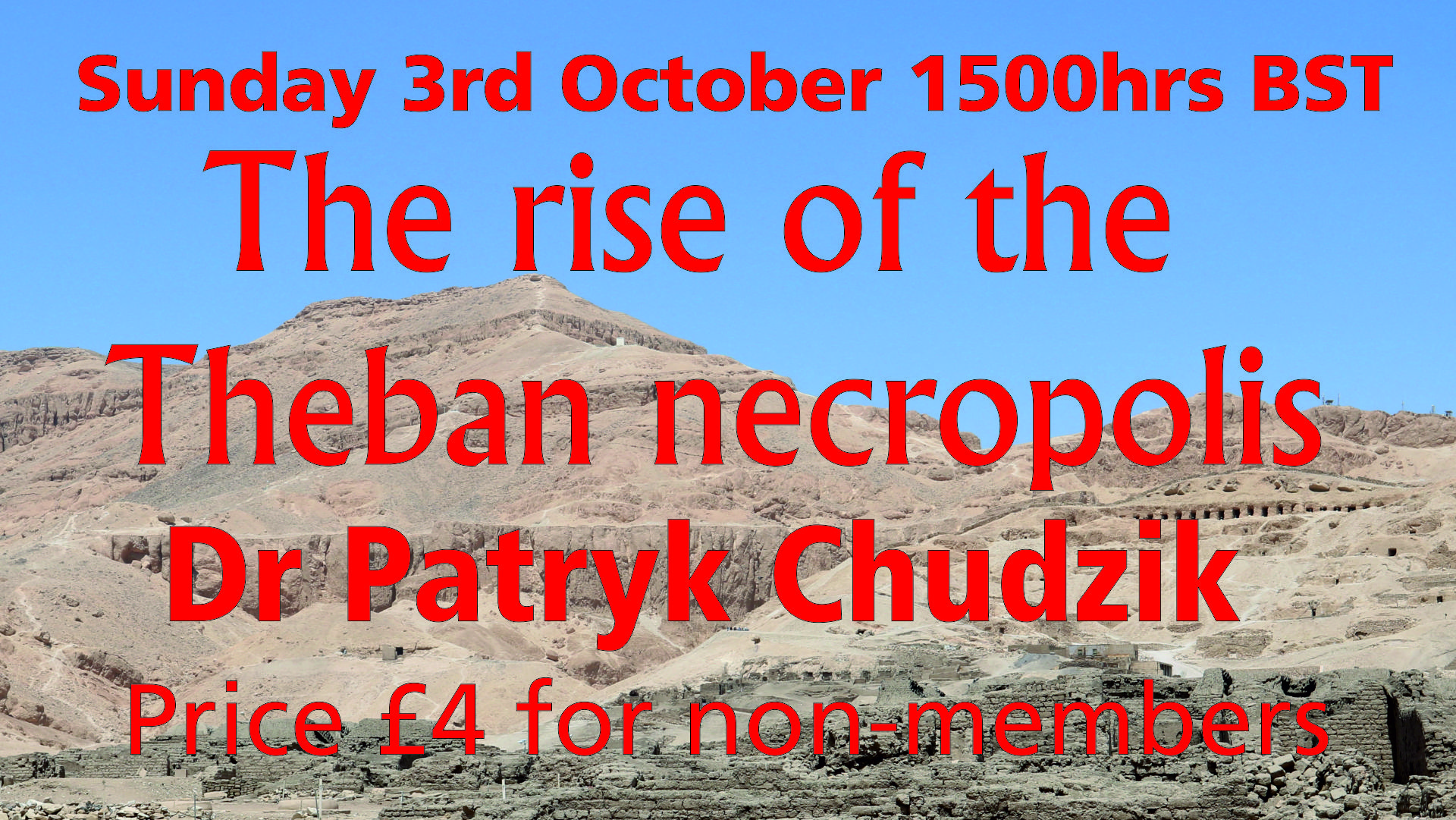Click here to download the review of this talk
The origin of the royal necropolis of Thebes goes back to the reign of Nebhepetra Mentuhotep II of the Eleventh Dynasty, who reunited Egypt after a long period of political destabilization and civil war referred to in modern historiography as the First Intermediate Period. During the reign of Mentuhotep II, Egypt entered an era of cultural prosperity, a classical period of art, history and literature known as the Middle Kingdom. The king decided to build his mortuary Temple in the rocky bay of Deir el-Bahari leaving the cemetery of his ancestors in et-Tarif.
The most prominent courtiers, who took part in these historical events and were witnesses to the transformation of traditions codified during the Old Kingdom in Memphis to new patterns were buried in North Asasif, high up on the cliffs surrounding Deir el-Bahari. The hillside was parcelled out into building lots. Each owner fenced his lot with brick or fieldstone walls, leaving a gateway at the foot of the hill. Behind the gateway rose a bare, smooth avenue, graded with the limestone chip thrown out by the quarrymen who cut the tomb above.

The doorways to the elite tombs were located in the centre of the mud-brick and stone façades at the upper end of the slope. Wooden doors opened onto lofty corridors, some of them paved and roofed with sandstone slabs and walled with fine, white, limestone blocks. In the tomb of Khety (TT 311) these blocks were decorated with daily-life scenes and representations of a funeral ceremony. The long entrance passages led to square chambers, functioning as funerary cult chapels that housed a statue of the deceased with an altar in front of it. The walls of Khety’s cult chapel were decorated with scenes showing the voyage to Abydos, various funerary rituals, food production, and the manufacture of goods, followed by rows of offering-bearers. The entrances to the burial apartments were located in the back walls of the cult chapels or in front of their doorways, as in the tomb of Meru (TT 240). Behind them, sloping passages led to the burial chambers, housing the sarcophagi. After the funeral, these entrances were sealed. The walls of some of the sarcophagus chambers were decorated with representations of false doors, friezes of offerings, and offering lists.
This talk was given by Dr Patryk Chudzik of the Polish Archaeological Expedition to North Asasif: The Asasif Project, the Polish Centre of Mediterranean Archaeology and the University of Warsaw at the October 2021 meeting of the Essex Egyptology Group which was held on 3rd October online via Zoom – click here to download the review of this talk.